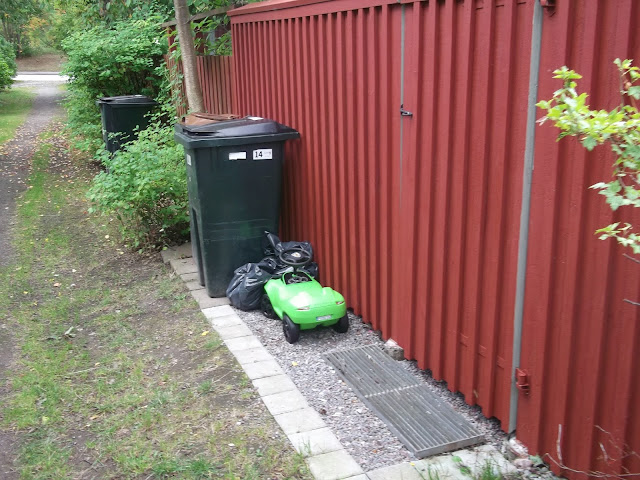An exhibit at the Helsinki City Museum. The English portion of the text below reads:
'The facades of stone houses hide the inner yards behind them. The yard is a half-public, half-private world of its own that offers occupants an extension of the cramped home: a space to hang up washing to dry, and a place for children to play. The use of the yard is limited by practical considerations such as waste disposal and transport, but also by the occupants' need for community and leisure.
'The yard is the caretaker's realm. He usually lives in the same house, takes care of the building and keeps a keen eye on the children. For the children, the yard is above all a safe place to play. Occasionally some interesting - or even dangerous - characters may wander into the yard.
'As the number of cars increases, the inner yards are asphalted over and the occupants can no longer use them as before. Caretakers disappear, the houses are serviced by maintenance organisations, and neighbours no longer know one another, as they don't spend time together in the yard.'




























































































































































